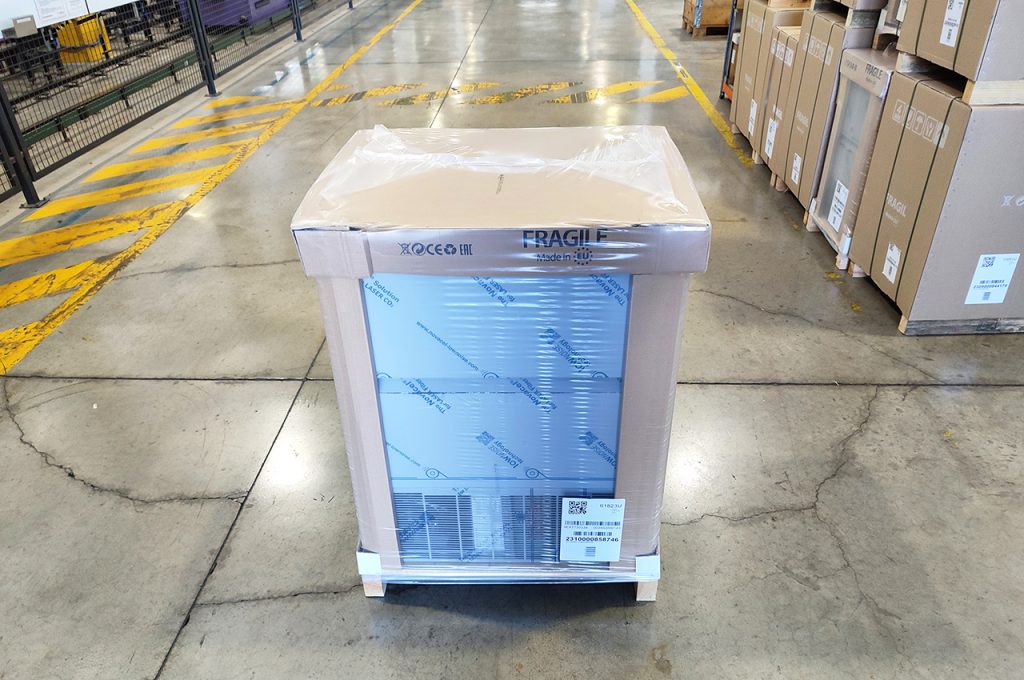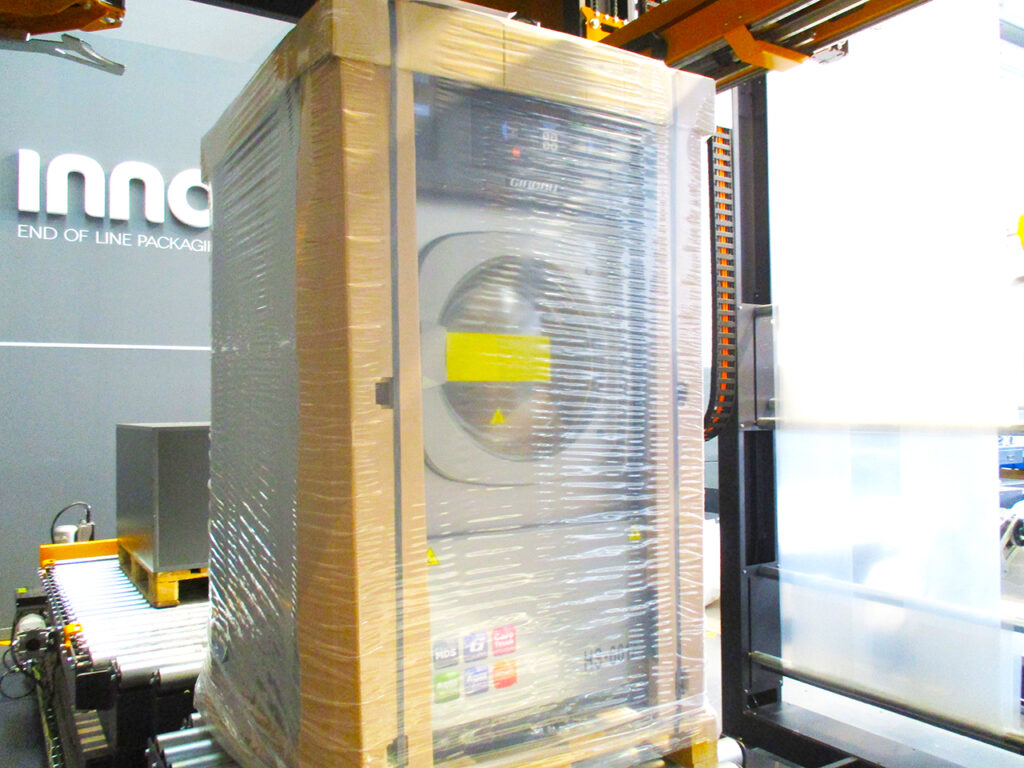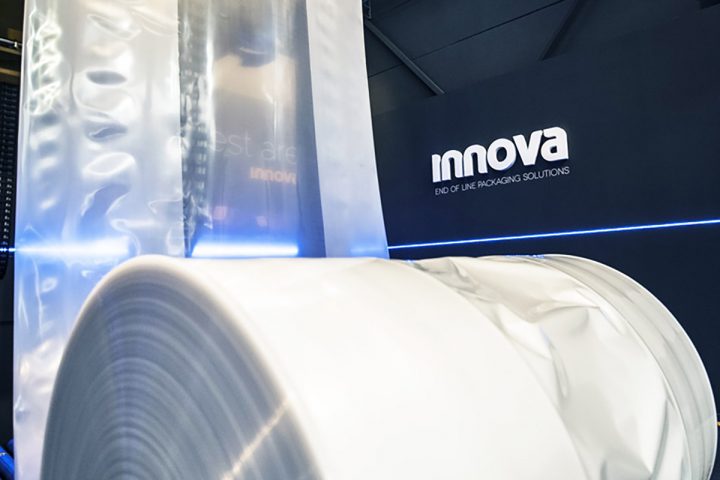Why does Stretch Hood offer the best protection for the Home Appliance sector?
When it comes to transporting or storing products such as washing machines, refrigerators, or dishwashers, selecting the right packaging system is crucial to ensure they arrive at the end consumer in perfect condition. Home appliances are a type of load that requires total protection throughout the entire logistics process, as they are bulky, fragile, and high-value products.
The industry is increasingly adopting innovative and efficient packaging solutions like the Stretch Hood packaging system, because with just one tubular film, the load is fully covered, protected, and secured for handling.

What packaging characteristics and requirements do home appliance products have?
Before understanding the advantages that Stretch Hood offers over other packaging solutions, it’s essential to recognize that home appliances present a unique set of challenges due to the nature of the product and the demands of today’s market.
- High volume and weight: Many of these products are large and heavy, so they require packaging that ensures firm holding and high pallet stability.
- Delicate surfaces and aesthetic finishes: Appliances often feature enameled or stainless steel surfaces that are prone to scratches, which can compromise both the product’s functional value and appearance.
- Variety of formats: Production lines must package everything from small appliances to large equipment, so a system is needed that can automatically adapt to each format, reduce downtime caused by stoppages, and use only the necessary amount of film.
- High-quality presentation and labeling: One of today’s market requirements is that the product must be visible, and that barcodes, labels, and logos remain legible throughout the logistics chain.
- Efficiency and speed: In a highly competitive market, end-of-line speed and reduced energy consumption are essential to maintain profitability.

Why cover rather than wrap home appliances?
Before going into the advantages of Stretch Hood, it’s important to understand the differences between the two most common systems used to package home appliances.
1. Wrapping the load
To wrap a load, whether with a semi-automatic or automatic pallet wrapper, a film is stretched and wrapped around the load. This system is widely used due to its versatility and load-holding capacity, but it does not guarantee full protection.
2. Covering the load with Stretch Hood
The covering process applies a tubular stretch film that fully covers the pallet from top to bottom, adapting perfectly to the shape of the product. This allows for superior protection, reduced use of consumables, and a higher-quality finish.
Choosing between the two depends on various factors such as the type of load, protection and presentation requirements, and supply chain efficiency.
What advantages does Stretch Hood offer?
Given the specific requirements of the home appliance sector, Stretch Hood stands out as the best solution to meet these demands. Let’s take a look at the advantages of the cold wrapping system:
1. Lower packaging costs
There’s no need for excessive consumable use to properly protect home appliance loads. The Stretch Hood system adapts to the pallet’s dimensions, using a single cover to protect and secure the load, saving energy and up to 50% in consumables.
2. Total protection and sealing
Stretch Hood film provides sealing and protection against external agents such as humidity, dust, or UV rays, while also preventing surface damage from bumps or abrasions. It fully covers the load without the need to add a top cover or additional wrap film.

3. Speed and optimization
Stretch Hood meets the high output demands of the home appliance industry by covering up to 120 pallets per hour. This also leads to significant optimization of logistics delivery times.
4. Adaptability to multiple formats
Another advantage is its stretchable film, which allows it to adapt to different types of appliances, capable of covering both low-profile and large-format loads.
5. Additional transport security
In addition to providing the best load protection, Stretch Hood also offers added load stability. Load stability is key to preventing tipping and shifting during transport, which could result in irreparable product damage.

6. Improved brand image and presentation
This covering system provides full transparency and a superior-quality finish that adds value at product delivery. A smooth, wrinkle-free appearance that allows the company’s logo to be printed on the film. Moreover, its transparency ensures that barcodes, labels, and logos remain readable, which greatly enhances logistics traceability.
7. The most sustainable packaging solution
Lastly, it’s worth noting that Stretch Hood is the most environmentally friendly system, thanks to its lower plastic consumption and the possibility of using films with recycled content that are 100% recyclable. Additionally, Innova’s Stretch Hood machine reduces CO₂ emissions by incorporating high-efficiency energy-saving components and motors.

In conclusion, the Stretch Hood system stands out as the most suitable packaging solution to meet the needs of the home appliance sector. Its ability to fully protect loads, reduce consumables, and wrap at high speed makes it a key asset in optimizing end-of-line and logistics processes.
At Innova Group, with more than 20 years of experience in developing and manufacturing packaging solutions, we can help and provide you with all the information you need about Stretch Hood. Contact our technical team and discover how to optimize and improve your end-of-line operations.










